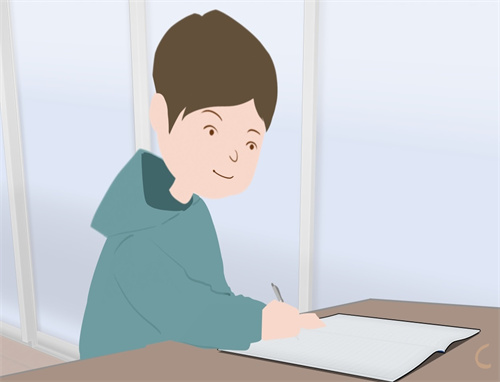高中英语时态用法:现在进行时和过去将来时
中学英语涉及到的时态一共有16种,下面给大家准备了现在进行时用法说明,希望对大家复习备考有帮助。
高中英语十六种时态用法详解之现在进行时
1. 现在进行时的定义
现在进行时主要用于表示目前正在进行的动作,有时也可表示现阶段在进行的动作。如:
The teacher is giving us an English lesson. 老师正在给我们上英语课。
The farmers are getting in their crops. 农民们正在收割庄稼。
We are making preparations for the conference. 我们一直在为会议作准备。
2. 现在进行时的结构
现在进行时由“am / is / are + 现在分词”构成。如:
I’m studying at Yu Cai Senior Middle school. 我在育才中学读书。
He is writing on the desk. 他再课桌上写字。
They are talking about their visiting the Great Wall. 他们在谈论游长城的事情。
【说明】动词现在分词的构成方法:
(1) 一般在动词后加-ing。如:say—saying, play—playing, think—thinking, study—studying, teach —teaching, blow—blowing, build—building.
(2) 动词若以-e结尾, 则去e再加-ing。如:love—loving, make—making, guide—guiding, date—dating.
(3) 在以单短元音的重读闭音节结尾,且末尾只有一个辅音字母的动词后,双写最后一个辅音字母,再加-ing。如:begin—beginning, regret—regretting, plan—planning, ban — banning.
(4) 在以ie结尾的动词后,改ie为y,再加-ing。如:lie—lying, die—dying, tie—tying.
(5) 在以-c[k] 结尾的动词后加-king。如:picnic—picnicking, panic—panicking.
3. 现在进行时的应用
(1) 表示目前正在发生或进行的动作。如:
They are planting trees on the mountain. 他们在山上植树。
Mother is preparing supper in the kitchen. 母亲在厨房做晚饭。
(2) 有些非持续性动词的进行时可以表示动作即将进行或发生,或表示动作的重复。如:
He is joining the army. 他要参军了。
They are buying the house. 他们要买那座房子。
(3) 当现在进行时中有always, forever, constantly, continually修饰时,表示说话人的赞赏或厌烦的感情。如:
Why is the baby always crying? 为什么那个老是在哭。
They are always helping us. 他们总是帮助我们。
注意:表示状态、感觉、心理活动的静态动词,一般不使用语进行时态。
高中英语十六种时态用法详解之过去将来时
1. 过去将来时的定义
过去将来时主要用于表示过去某个时候看来即将发生的动作或存在的状态。如:
He said he would come here next Friday. 他说他下周星期五来这儿。
I knew that he would help us when we were in trouble. 我知道当我们陷入困境时它会帮助我们。
2. 过去将来时的结构
(1) would + 动词原形。如:
She told us that she would try her best to catch up with other classmates this term. 她告诉我们说她将一切努力在本期赶上其他同学们。
When you asked Li Lei for help, he would never refuse you. 过去当你请她帮忙时,他绝不会拒绝。
(2) was / were going to + 动词原形。如:
He told us that he was going to attend the meeting. 他告诉我说他要参加那次会议。
He said that I was going to be sent to meet her at the railway station. 他说将要拍我去火车站接她
(3) was / were to + 动词原形。如:
The building was to be completed next month. 这座建筑改在下个月竣工。
Li Lei was to arrive soon. 李蕾很快就要到了。
(4) was / were about to + 动词原形。如:
We were about to leave there when it began to rain heavily and suddenly. 就在我们要离开时,天突然下起了大雨。
He was about to have lunch when the bell rang. 就在他要吃中饭的时候,门铃响起来了。
(5) was / were +现在分词。如:
He was leaving the next day. 他第二天要走了。
We were informed that the leaders were coming to our school soon. 我们接到通知说领导们很快要来我们学校。
3. 过去将来时的用法
(1) 过去将来时,一般用于主句为过去时的宾语从句中。如:
He said he would stay with us. 他说他要与我们呆在一起。
He said he would never go there again. 他说他绝不会再去那儿。
(2) 过去将来时,用于虚拟语气中,如:
If I were you, I would not do that. 要是我是你的话,我就不会那样做。
If he were here, he would show us how to do it. 如果他在这儿,他就会向我们展示该如何做了。
4. 拓展
was / were going to + 动词原形;was / were to + 动词原形;was / were about to + 动词原形等结构都可表达当时一种未曾实现的意图或打算。如:
The conference was going to be held the next month. 会议下个月开。
We were to have our class at eight. 八点我们该上课了。
I was about to tell him about it when Wu Dong got in. 就在我要告诉他时,吴东进来了。






